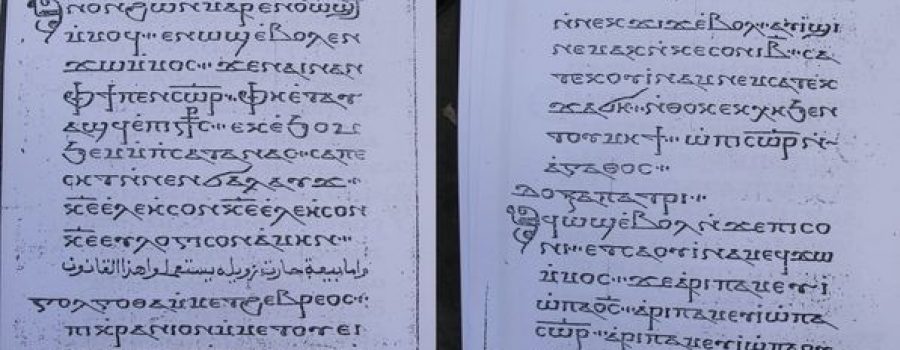When Copts contemplate the rituals of Holy Week, oftentimes, the first thing that comes to mind is the burial rite during the 12th hour of the Good Friday service—if not for anything else, then just because of the hymn chanted during the ritual: Golgotha.
While most will tell you that the hymn originated from the Pharaohs and that it was used when a king died, there is no evidence (that I’ve seen) that this is actually the case; however, there is no doubt that the moment this hymn is chanted, tears fall from the eyes of nearly every congregant in attendance. It is undoubtedly one of the most simple yet evocative melodies to exist within the Coptic musical milieu.
Golgotha is a canon — in the Coptic Rite, a canon is typically chanted at the conclusion of the service; during vespers or matins services, it is chanted while the assembly comes forward to kiss the cross [and the ⲉⲩⲁⲅⲅⲉⲗⲓⲟⲛ]: canons also exist for the eucharistic liturgy as well. There are canons for each day of the week, and for each season or ecclesiastic occasion (these are being translated as part of the Psalmody project ![]() )
)
Golgotha, in its current form, is a combination of two canons:
a) ⲁⲩⲓ ⲛ̀ϫⲉ ⲛⲓⲇⲓⲕⲉⲟⲥ
b) ⲅⲟⲗⲅⲟⲑⲁ
You’ll notice that I placed ⲁⲩⲓ ⲛ̀ϫⲉ ⲛⲓⲇⲓⲕⲉⲟⲥ first; truth be told, this is the older canon and was common to multiple places and manuscripts! Golgotha (according to the Ordo of the Patriarchate) originated from the parish in Harit Zuwaila. You may also notice that the two topics are vastly different: the former discussing the burial of Christ and the origin of the trisagion, while the latter talks about the right hand thief and his confession.
Note: Earliest descriptions of the Good Friday service mention the use of either ϩⲓⲧⲉⲛ ⲡⲉⲕⲥⲧⲁⲩⲣⲟⲥ or ⲁⲩϯⲓϥⲧ which are two other canons chanted throughout the year on Friday…
Attached is a translation that Kerolos Bernaba and I worked on and recorded! We wish you all a blessed Holy Week and Paschal Feast!







Leave a Reply
Your email is safe with us.